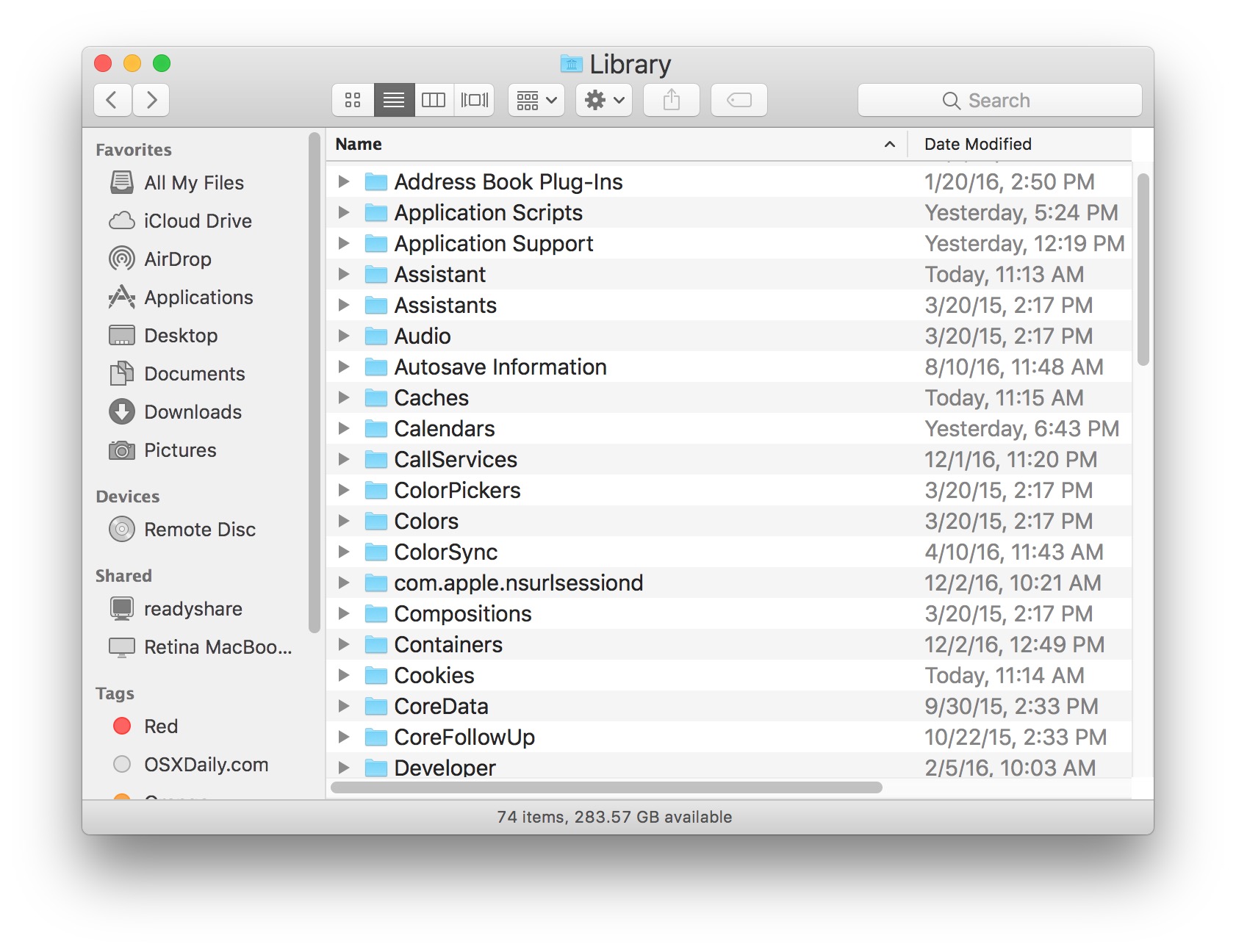Library Preferences Folder In Mac Empty
Only profiles that have been registered properly show in the Profile Manager and can be removed there.A way to register a profile is to use the Profile Manager and use the 'Choose Folder' button to browse to that folder to register a missing profile and add it to the profiles.ini file.This also makes it easier to remove possible profile folders in the location for the disk cache that you might otherwise miss.Once such an unregistered profile shows in the Profile Manager then you can easily remove it properly including the disk cache.
- Library Preferences Folder In Mac Empty Mac
- Show Library Folder Mac Os
- Library Preferences Folder In Mac Empty Computer
- Mac Preferences Error

Library Preferences Folder In Mac Empty Mac
- /Users/<user>/Library/Application Support/Firefox/Profiles/<profile>/
- /Users/<user>/Library/Caches/Firefox/Profiles/<profile>/Cache
The compatibility.ini file and the prefs.js file shows what Firefox version has last used the profile in case you want to check this.Such unregistered profiles indicate that there have been problems with the profiles.ini file.
Feb 21, 2020 It is really annoying when your files, folder or documents show empty suddenly. If your folder shows empty on Mac all of a sudden, we can help. EaseUS Data Recovery Wizard for Mac, the best Mac data recovery tool, can get empty Documents folder back.

- The preference and support files for InDesign have similar locations. These files are primarily grouped into three locations, though there is data in additional locations as noted below. The Application folder: At the location of the application, or executable, are subfolders for presets and other.
- Jul 11, 2011 My libraries folder is empty, lost many files. Go directly to c:drive, users, users name, then look at the different folder listings for what your looking for, see if these locations are empty. Mcafee/Norton/IOBit security should not be Installed on a functioning computer=FreeAdvice.
An iMovie library holds all the media and data used to make movies in iMovie. If your iMovie library is large and you want to free up storage space on your Mac, you can move your iMovie library to an external drive.
Before you move an iMovie library, it's a good idea to back up your Mac.
Moving your library to an external hard drive doesn’t affect any iMovie Theater content that you have moved to iCloud.
Prepare your drive
Show Library Folder Mac Os
You can store your library on an external storage device such as a USB Thunderbolt drive formatted as APFS or Mac OS Extended (Journaled). Apple doesn’t recommend storing iMovie libraries on external storage devices like SD cards and USB flash drives, or drives shared on a network.
Merge two photo libraries mac. You can’t store your library on an external drive or other disc used for Time Machine back-ups.
Library Preferences Folder In Mac Empty Computer
Move a library to an external storage device
- Quit iMovie.
- Select your external drive in the Finder, then choose File > Get Info.
- If the information in Sharing & Permissions isn’t visible, click the triangle , then make sure that the 'Ignore ownership on this volume' tickbox is selected. If it's not selected, click the lock icon to unlock it, enter an administrator name and password, and then select the tickbox.
- Click your desktop to make sure that you’re in the Finder, then choose Go > Home from the menu bar at the top of your screen.
- Open the Movies folder, then drag the file named iMovie Library to your external hard drive.
- When the library file has finished copying to your external drive, double-click the library file on the external drive to open it in iMovie. If an alert appears asking you to give iMovie access to a removable volume, click OK.
If you clicked Don't Allow, in the Finder choose Apple menu > System Preferences, click Security and Privacy, then click Privacy. Click Files and Folders in the sidebar, then select 'Removable Volumes' under iMovie. - Make sure that the library you moved contains all your media, then drag the original file from your Movies folder on your Mac to the Trash.
If you disconnect the external drive
When your external drive is connected to your Mac, the library you moved to the external drive opens automatically in iMovie. If you disconnect the external drive containing the library, iMovie opens to a new, empty library created in the Movies folder on your Mac. iMovie automatically saves any projects you create and media that you import in the new library.
Mac Preferences Error
If you want to open the library you moved to an external drive, you can open it after you reconnect the external drive. You can then move clips, events and projects between libraries.